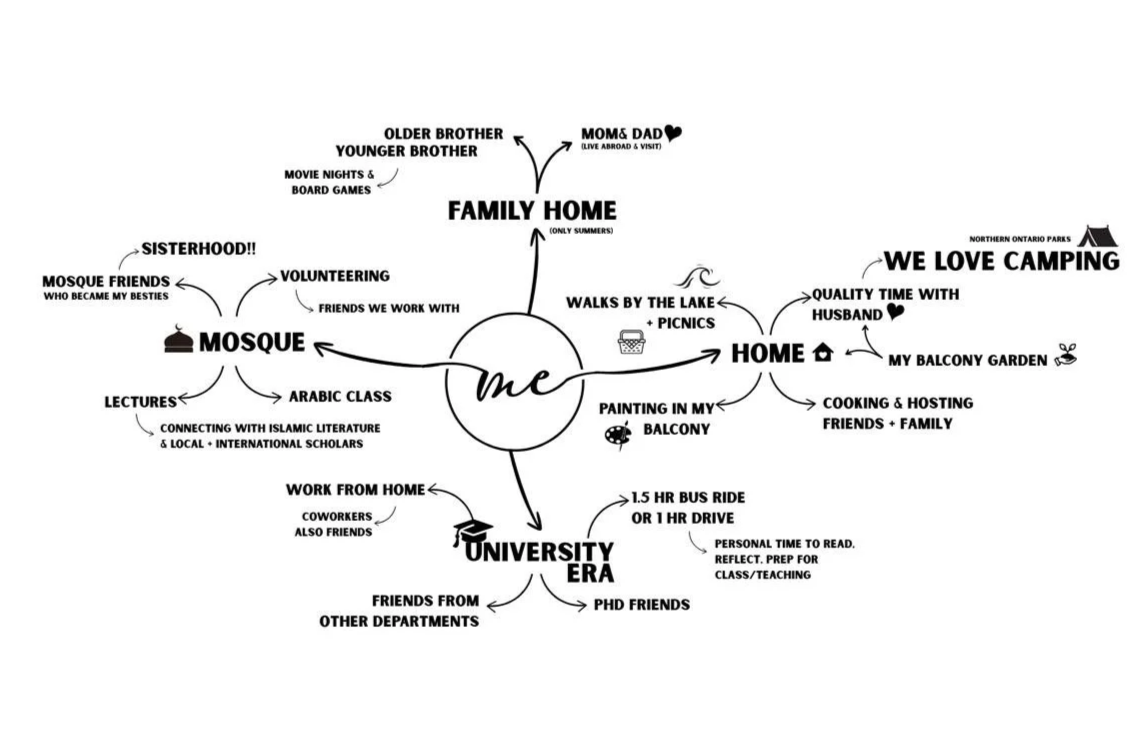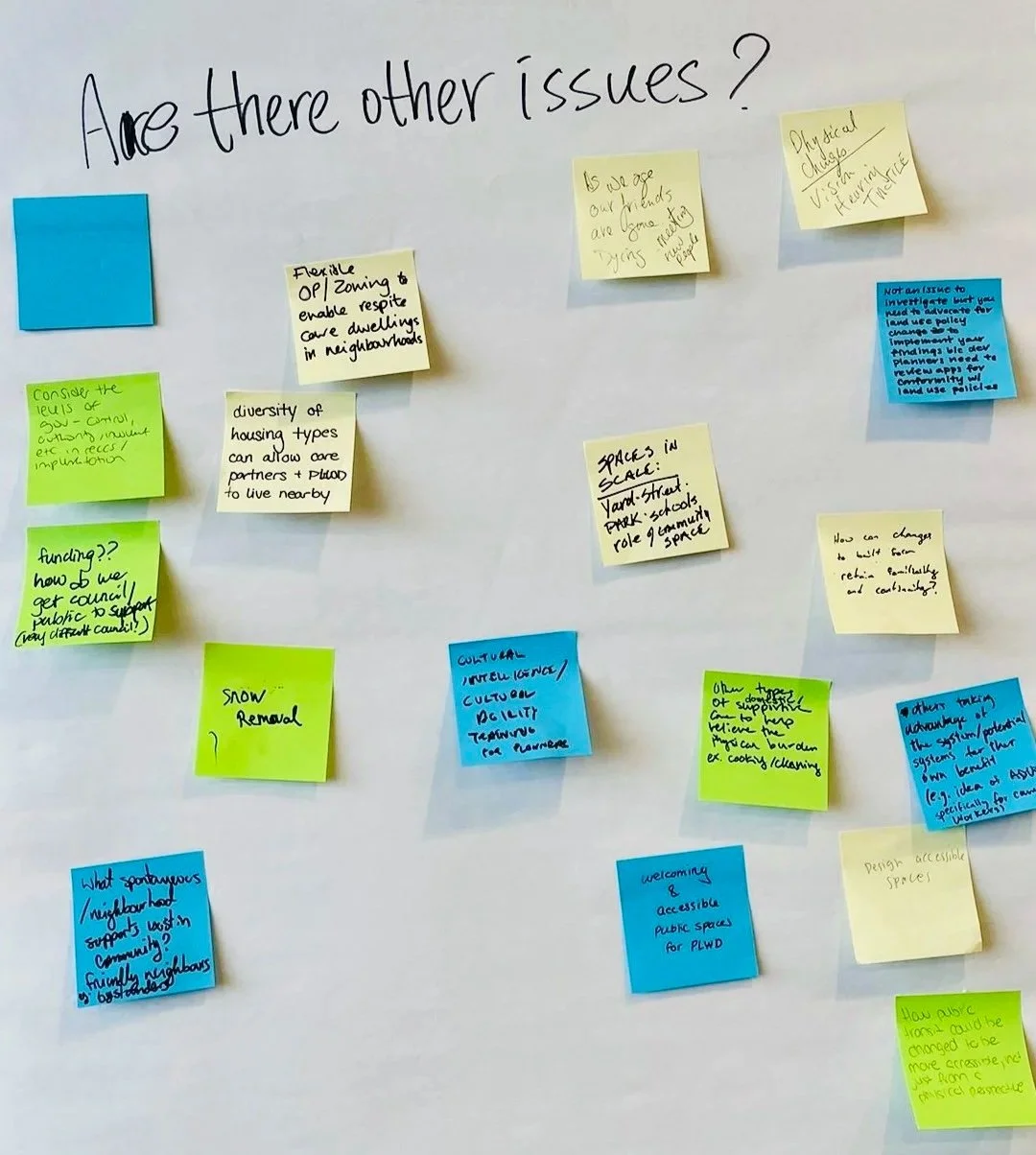Care Mapping Workshop at CIP & OPPI Conference 2025
How might care mapping or a care lens be useful in your work as a planner? What are the actions and takeaways from planners from the workshop?
By Venus Cheung
In the CIP/OPPI conference, our team had the opportunity to present findings from the “Care and Suburbanisms” project, which explores the everyday experience of immigrants living with dementia, their care partners, and care workers in Scarborough, Toronto. In the presentation, we have two interactive activities (Care Mapping & World Café) and a presentation about our research design and findings.
The findings will be coming soon! Stay tuned!
Our HAP Lab Team - Venus Cheung, Samantha Biglieri, and Salma Abdalla at the CIP/OPPI conference.
1. Care Mapping
The first activity is care mapping. This aims to facilitate reflection on how we experience care in our own everyday lives. But what is care? Care doesn’t only appear when someone is sick, but it can be found every day! Care can be a neighbour checking and embedded in the design of our environments, like a bench to rest on. Participants were enthusiastic about sharing their experiences with this care mapping exercise. A participant shared that people come to mind first, then she locates these people in places.
The temporal dimension is reflected among participants: weekday and weekend worlds (university and home; travel between the workplace in one municipality and parents’ home in another). Time poverty is emphasized as well. Overall, this exercise helps to keep PEOPLE at the forefront when we plan, not overly focused on PLACES, thinking about zoning and building forms.
Are you curious to try a care network mapping? Here are the care mapping guidelines to help you try it at home:
You’ll need about 10 minutes. Remember, there’s no “right” way to draw this out!
Prompts:
Who is in your care network?
What places in your neighbourhood allow those care relationships to happen and expand?
How do places care for you? Or you for them?
What kinds of support do you receive? (Emotional support, cultural connection, social interactions, and practical or hands-on help)
* Care might come from people, nature, or from places, and sometimes, all.
An example of a care map.
2. World Café
At the end of the workshop, we have the second interactive exercise, World Café, to reflect on the session and brainstorm future opportunities. Participants rotated between three questions and here is a highlight of what we have heard.
How might care mapping or a care lens be useful in your work as a planner?
Understanding community connections
Considering care when envisioning mixed-use communities
Include PLWD in secondary plans and other plans
What will you take away from this conversation?
Care is multi-dimensional
Considering policies for PLWD, care workers, and care partners together
Time poverty is real
Are there other issues you think researchers should investigate to help you in your planning role?
Topics: ways to meet new people as we age, accessible design, transit accessibility
Skills to have: Cultural intelligence for planners, advocacy
Policies: funding streams, levels of government involved in implementation, flexible official plan or zoning
Participants’ ideas about using care mapping or a care lens for planners.
Participants’ takeaways from the workshop.
Participants’ ideas about future research to help planners create dementia-inclusive communities.
3. Reflection
Care is multi-dimensional. It involves time, space, and social relationships. Care is multiscalar. It can take forms as a bench, an informal chat with neighbours, phone calls with family and friends, an ethnic grocery store experience, etc. What planners can do is to observe and understand the diverse care practices and start to address barriers in policies and infrastructure that hinder the quality of care for PLWD, care partners, and care workers. By learning the networks and enablers of care, it is hoped that we can promote diverse approaches to dementia-inclusive communities.





